The question is simple: I cannot understand the Zipper data structure.
My question is related to its uses with a Tree.
I want to understand how can I change the tree node using zipper. And how not to copy the whole tree (or the most part of it).
Please, clarify if I'm wrong with zipper. Maybe it cannot help with the tree update?
Or, maybe, it is possible to update the tree and I just cannot see the way?

